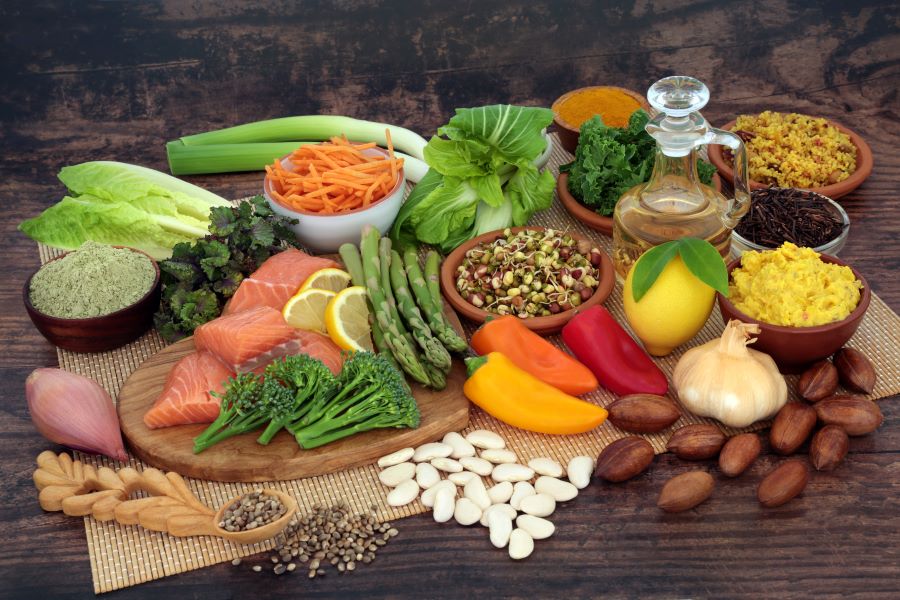Flavor balancing techniques for plant-forward meals
Practical flavor balancing for plant-forward meals focuses on acidity, salt, fat, aromatics and texture to showcase vegetables, grains and legumes. This teaser previews methods that use seasonality, pantry basics, fermentation and preservation to build satisfying, sustainable plates.

Plant-forward cooking asks cooks to make vegetables, grains and legumes the central, flavorful elements on the plate. Achieving balance requires attention to five pillars — acidity, salt, fat, aromatics and texture — alongside strategies that emphasize seasonality, pantry preparedness and zero waste habits. This article presents accessible techniques, pairing suggestions and preservation tips such as fermentation and simple brewing to deepen flavors and stretch ingredients while supporting sustainability and nutrition goals.
How does sustainability shape flavor choices?
Choosing ingredients with sustainability in mind changes how you build recipes. Seasonal produce generally offers stronger flavor, reducing the need to mask blandness with excessive seasoning. Prioritizing local services or farmers’ markets can cut transportation impacts and highlight varieties with distinct aromas and textures. Using whole vegetables — stems, leaves and peels when edible — boosts both flavor and nutrition while supporting zero waste. Planning around what’s abundant also helps create predictable pantry needs and encourages batch preservation to capture peak-season tastes.
How can fermentation add depth to plant dishes?
Fermentation is an accessible technique for increasing umami, acidity and long-term preservation. Quick ferments like lacto-fermented pickles, sauerkraut or fermented chilies add lively tang that brightens grain bowls and roasted vegetables. Miso or fermented bean pastes can be blended into dressings and sauces to provide savory backbone. Brewing nonalcoholic ferments, such as kombucha or water kefir, produces beverage components or reductions usable in glazes and vinaigrettes. Small-batch trials let you tailor intensity while adding shelf-stable options to the pantry.
What role does pairing play in balanced plates?
Pairing balances contrast and complement to create satisfying meals. Combine bitter greens with sweet roasted root vegetables to create a flavor arc; match acid with fat — a squeeze of lemon or a tahini drizzle — to brighten and round richness. Spices and herbs act as bridges: toasted cumin and smoked paprika pair with roasted cauliflower, while fresh herbs like cilantro or basil lift bean-based dishes. Consider beverage pairing too: a lightly brewed herbal tea or a tart nonalcoholic shrub can echo dish aromatics and enhance overall perception of flavor and nutrition.
How does preservation extend flavor and reduce waste?
Preservation techniques extend the life of seasonal produce and consolidate flavors for later use. Freezing blanched vegetables, drying herbs, making compotes or canning sauces captures peak-season intensity. Salt-curing and oil confits concentrate and preserve aromatics for quick use in weekday cooking. Maintain a pantry of preserved staples — jarred tomatoes, dried mushrooms, miso, fermented hot sauce — to simplify weekday recipes and reduce the likelihood of food waste. Using peels and scraps for stock is another practical zero waste tactic that amplifies flavor in soups and stews.
How to use seasonality, pantry staples and spices?
Start meals with what’s in season and let pantry staples fill gaps: whole grains, dried beans, vinegars, oils and preserved citrus are foundational. Toast or bloom spices in oil to release volatile oils and deepen aromas before adding other ingredients. Add hearty herbs like rosemary early in cooking to release flavors; reserve tender herbs like parsley and basil to finish dishes and preserve their fragrance. Taste frequently and calibrate with acidity, salt and a textural element — crunchy seeds or toasted nuts — to achieve balance and enhance perceived nutrition.
How can leftovers be transformed into balanced meals?
Leftovers are opportunities to apply pairing and preservation techniques and avoid waste. transform roasted vegetables into soups or blended dips, repurpose grains into salads with fresh herbs and a bright vinaigrette, or quickly stir-fry legumes with new spices for a different flavor profile. Use a splash of vinegar, a spoonful of miso or a bit of fermented relish to recalibrate richness and add umami. Freeze clean vegetable scraps for later stock or turn bruised fruit into chutneys; these steps preserve flavors and support long-term pantry resilience.
This article is for informational purposes only and should not be considered medical advice. Please consult a qualified healthcare professional for personalized guidance and treatment.
Balancing flavors in plant-forward meals is both practical and creative. By focusing on acidity, salt, fat, aromatics and texture — and by using fermentation, preservation, smart pairing and pantry staples — cooks can create nutritious, satisfying dishes that reduce waste and celebrate seasonal produce.





